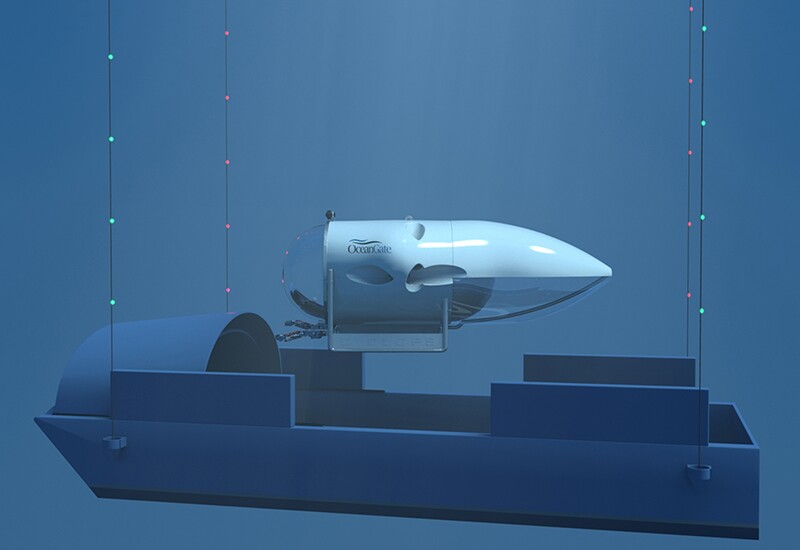In three years, if you happen to be 3,000 meters (9,800 ft) beneath the surface of the ocean, keep an eye out for the Cyclops. No, not the hairy giant, but the 5-passenger submersible. Once it’s commercially available in 2016, it should be “the only privately owned deep-water manned submersible available for contracts.” As for why it’s called the Cyclops, just check out its one-big-eye-like 180-degree borosilicate glass observation dome.
The Cyclops is currently being developed by submersible manufacturer OceanGate Inc., with technology and design research being done through a partnership with Boeing Research & Technology, and the Applied Physics Laboratory at the University of Washington. Yesterday it was announced that the sub’s initial hull design has been completed – so don’t go expecting to see anything more than renderings of the finished product just yet.
That 7-inch-thick hull will be made of carbon fiber, in which individual strips of pre-impregnated fiber are individually placed within the carbon fiber matrix. Developed by Boeing, this technique is said to offer finer production control than the more traditional filament winding process, and should allow the Cyclops to withstand the 4,300 psi (300 bar) of water pressure it will encounter at its maximum diving depth – the earlier-mentioned 3,000 meters.
The use of carbon fiber should also help keep its weight down.
Unlike remotely-operated vehicles (ROVs), the human-crewed Cyclops won’t require any data or power cables linking it to the surface – its onboard life support systems should allow for dive times of up to eight hours.

It will also utilize a patented cradle-like launch, retrieval and transport system, which should reportedly allow it to be operated at lower costs than other manned submersibles. Additionally, because it won’t require a tether and could be launched from a wide variety of surface vessel types, it may in some cases even be cheaper to use than an ROV.
One of the more interesting features of the currently-proposed design is the pivoting seats. These would allow crew members to sit upright (relative to the Earth’s horizon), even if the sub were descending nose-first. Once it reached depth and turned to cruise horizontally, the seats would simply swing around to remain upright. OceanGate has produced an animation of the process, which can be seen below.
Finally, if 3,000 meters just isn’t deep enough for you, plans also call for a 6,000-meter (19,685-ft)-rated version. It should be completed by the end of 2016.
Source: OceanGate

















